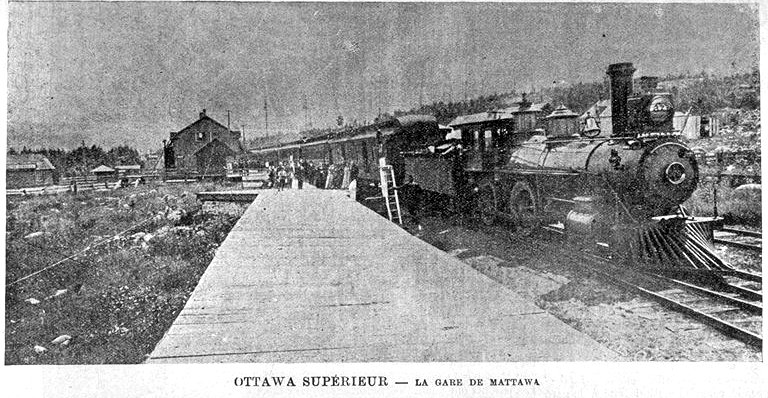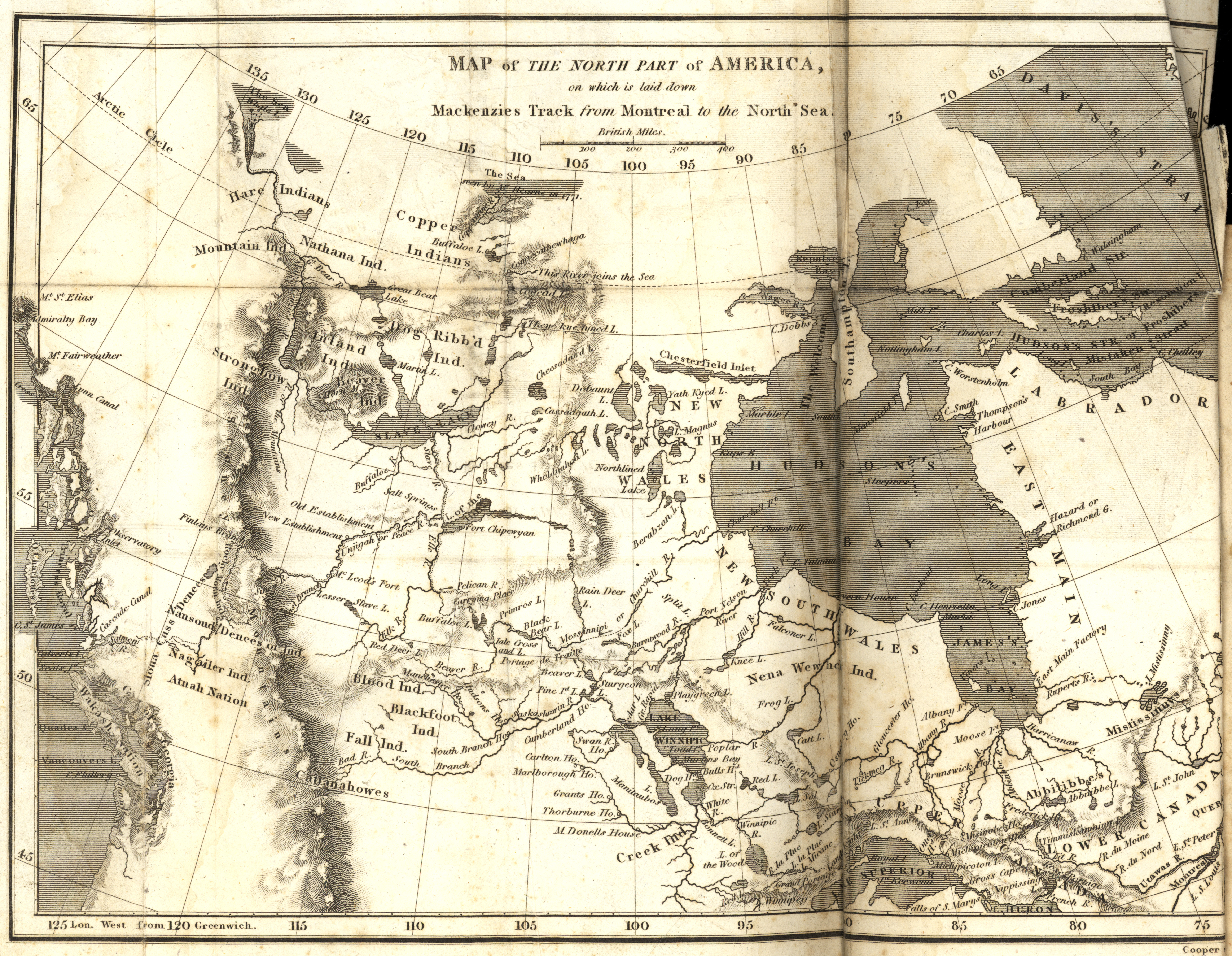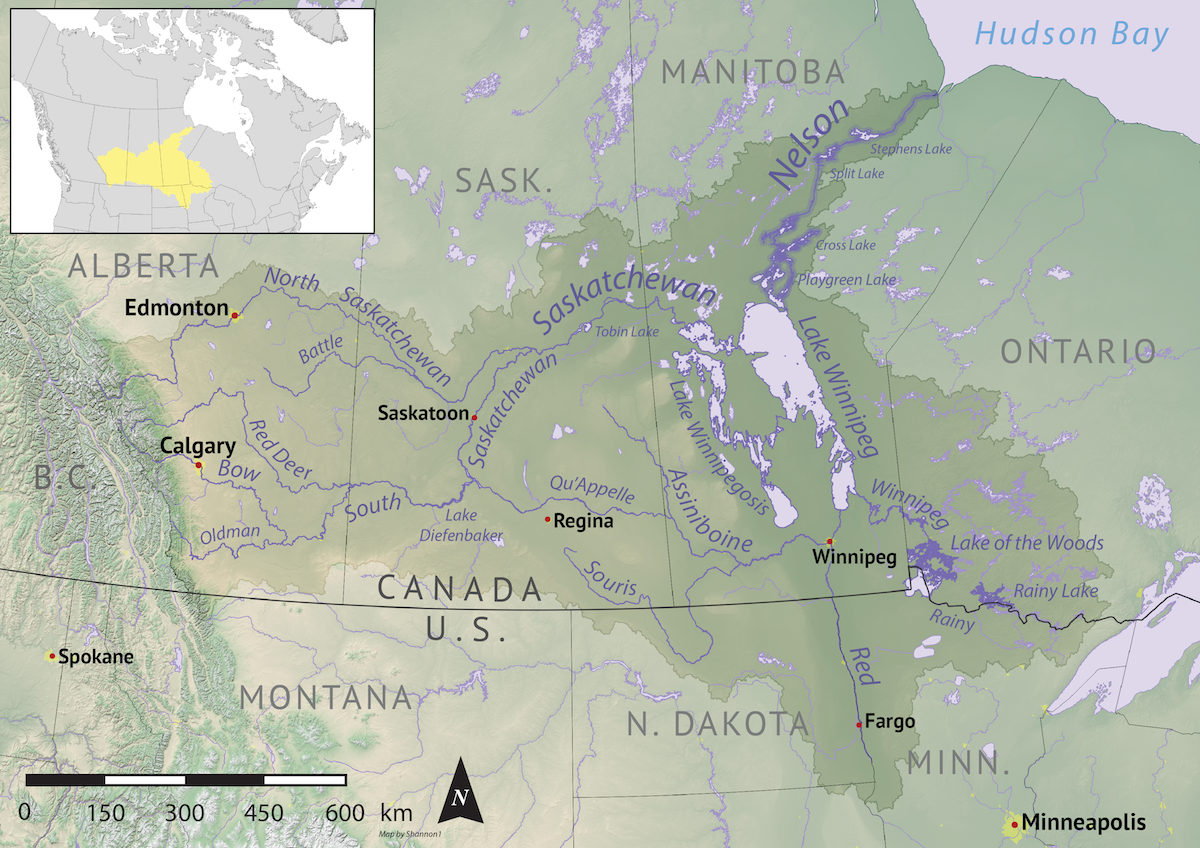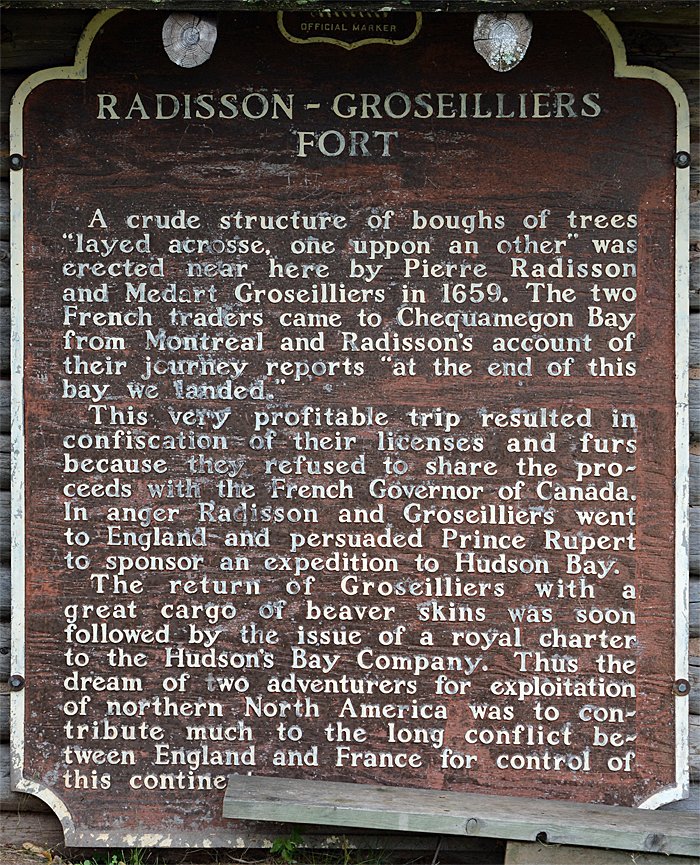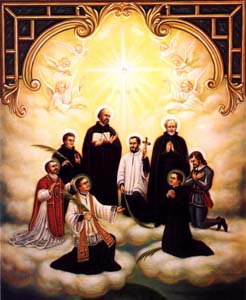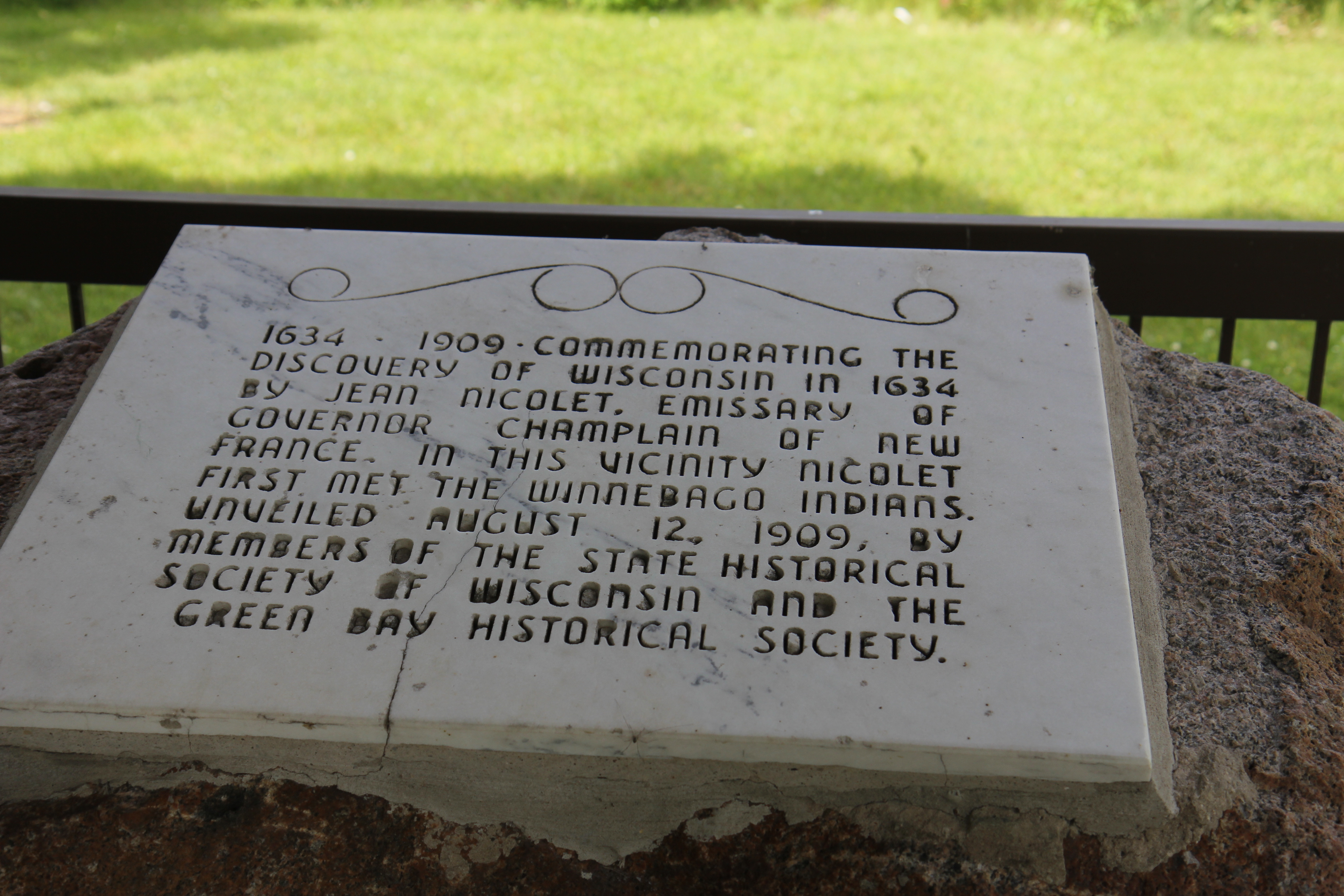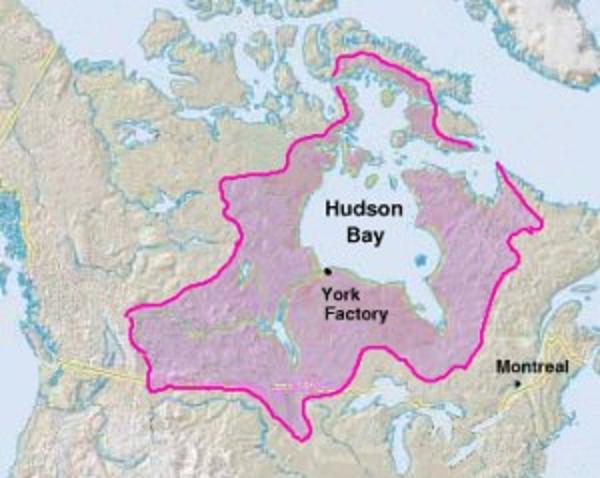|
Mattawa, Ontario
Mattawa is a town in northeastern Ontario, Canada on Algonquin Nation land at the confluence of the Mattawa and Ottawa Rivers in Nipissing District. Mattawa means "Meeting of the Waters" in the Algonquin language. The first Europeans to pass through this area were Étienne Brûlé and Samuel de Champlain. History The area was first inhabited by native people who used the Mattawa River as an important transportation corridor for many centuries. In 1610, Étienne BrûléCanadian Heritage Rivers System: Mattawa River fact sheet, Ministry of Natural ResourcesOnline version) and in 1615, Samuel de Champlain were the first Europeans to travel through the Mattawa area.Archeological and Historic Sites Board of Canada For some 200 years thereafter, it was a link in the important water route leading from Montreal west to Lake Superior. Canoes travelling west up the Ottawa turned left at "the Forks" (the mouth of the Mattawa) to enter the "''Petite Rivière''" ("Small River", as compared ... [...More Info...] [...Related Items...] OR: [Wikipedia] [Google] [Baidu] |
List Of Towns In Ontario
A town is a sub-type of List of municipalities in Ontario, municipalities in the Provinces and territories of Canada, Canadian province of Ontario. A town can have the municipal status of either a List of municipalities in Ontario#Single and lower-tier municipalities, single-tier or lower-tier municipality. Ontario has 89 towns that had a cumulative population of 1,813,458 and an average population of 22,316 in the Canada 2016 Census, 2016 Census. Ontario's largest and smallest towns are Oakville, Ontario, Oakville and Latchford, Ontario, Latchford with populations of 193,832 and 313 respectively. History Under the former ''Municipal Act, 1990'', a town was both an urban and a local municipality. Under this former legislation, a locality with a population of 2,000 or more could have been incorporated as a town by Ontario's Municipal Board upon review of an application from 75 or more residents of the locality. It also enabled the Municipal Board to ch ... [...More Info...] [...Related Items...] OR: [Wikipedia] [Google] [Baidu] |
Ottawa River
The Ottawa River (french: Rivière des Outaouais, Algonquin: ''Kichi-Sìbì/Kitchissippi'') is a river in the Canadian provinces of Ontario and Quebec. It is named after the Algonquin word 'to trade', as it was the major trade route of Eastern Canada at the time. For most of its length, it defines the border between these two provinces. It is a major tributary of the St. Lawrence River and the longest river in Quebec. Geography The river rises at Lac des Outaouais, north of the Laurentian Mountains of central Quebec, and flows west to Lake Timiskaming. From there its route has been used to define the interprovincial border with Ontario. From Lake Timiskaming, the river flows southeast to Ottawa and Gatineau, where it tumbles over Chaudière Falls and further takes in the Rideau and Gatineau rivers. The Ottawa River drains into the Lake of Two Mountains and the St. Lawrence River at Montreal. The river is long; it drains an area of , 65 per cent in Quebec and the r ... [...More Info...] [...Related Items...] OR: [Wikipedia] [Google] [Baidu] |
Alexander Mackenzie (explorer)
Sir Alexander Mackenzie (or MacKenzie, gd, Alasdair MacCoinnich; – 12 March 1820) was a Scottish explorer known for accomplishing the first crossing of America north of Mexico in 1793. The Mackenzie River is named after him. Early life Mackenzie was born in House in Stornoway in Isle of Lewis, Lewis. He was the third of the four children born to Kenneth 'Corc' Mackenzie (1731–1780) and his wife Isabella MacIver, from another prominent mercantile family in Stornoway. When only 14 years old, Mackenzie's father served as an Ensign (rank), ensign to protect Stornoway during the Jacobite rising of 1745. He later became a merchant and held the Tacksman, tack of Melbost; his grandfather being a younger brother of Murdoch Mackenzie, 6th Laird of Fairburn. Educated at the same school as Colin Mackenzie, the army officer and first Surveyor General of India, he sailed to New York City with his father to join an uncle, John Mackenzie, in 1774, after his mother died in Scotland. In ... [...More Info...] [...Related Items...] OR: [Wikipedia] [Google] [Baidu] |
Pierre Gaultier De Varennes, Sieur De La Vérendrye
Pierre Gaultier de Varennes, sieur de La Vérendrye (17 November 1685 – 5 December 1749) was a French Canadian military officer, fur trader, and explorer. In the 1730s, he and his four sons explored the area west of Lake Superior and established trading posts there. They were part of a process that added Western Canada to the original New France territory that was centred along the Saint Lawrence basin. He was the first known European to reach present-day North Dakota and the upper Missouri River in the United States. In the 1740s, two of his sons crossed the prairie as far as present-day Wyoming, United States and were the first Europeans to see the Rocky Mountains north of New Mexico. Early life Born in Trois-Rivières, New France, Pierre was the eldest son of René Gaultier de Varennes, who came to Canada as a soldier in 1665, and Marie, the daughter of Pierre Boucher, the first Governor of Trois-Rivières. The Gaultier family were minor nobility or landowners ... [...More Info...] [...Related Items...] OR: [Wikipedia] [Google] [Baidu] |
Médard Des Groseilliers
Médard Chouart des Groseilliers (1618–1696) was a French explorer and fur trader in Canada. He is often paired with his brother-in-law Pierre-Esprit Radisson, who was about 20 years younger. The pair worked together in fur trading and exploration. Their decision to enter British service led to the foundation of the Hudson's Bay Company in 1670. This company established trading posts and extensive relations with the First Nations in western Canada. It was highly influential in making the region amenable to British colonization. Radisson, with Groseiliers, also mapped many of the Great Lakes and trading routes used by settlers. Early life Médard Chouart was born in Charly-sur-Marne, Champagne province, France, to Médard Chouart, his father and Marie Poirier. He also had a cousin named Médard Chouart. He later called himself Sieur des Groseilliers after a farm his parents managed in Bassevelle. He was reported to have immigrated to New France in 1641 at age 23, but according ... [...More Info...] [...Related Items...] OR: [Wikipedia] [Google] [Baidu] |
Pierre-Esprit Radisson
Pierre-Esprit Radisson (1636/1640–1710) was a French fur trader and explorer in New France. He is often linked to his brother-in-law Médard des Groseilliers. The decision of Radisson and Groseilliers to enter the English service led to the formation of the Hudson's Bay Company. His career was particularly notable for its repeated transitions between serving Britain and France. There is no image of him other than that provided in his writings and those of the people who encountered him in New France, in Paris on the fringes of the court, on remote Hudson Bay, and in late Stuart London. Radisson should be considered in multiple contexts; for his achievement as a narrator of his own life, the range of his explorations, his experiences among the Indigenous peoples, and his social formation, both as a man of the early modern period for whom personal honour was an important value and as a working trader participating in the mercantile projects of the era. Radisson's life and writing ... [...More Info...] [...Related Items...] OR: [Wikipedia] [Google] [Baidu] |
Gabriel Lallemant
Gabriel Lalemant (3 October 1610 – 17 March 1649) was a French Jesuit missionary in New France beginning in 1646. Caught up in warfare between the Huron and nations of the Iroquois Confederacy, he was killed in St. Ignace by Mohawk warriors and is one of the eight Canadian Martyrs. Life Gabriel Lalemant was born in Paris, 3 October 1610, the son of a French lawyer and his wife. He was the third of six children, five of whom entered religious life. Two of Gabriel's uncles served the Jesuits in New France: Charles Lalemant as the first Superior of the Jesuit missions in Canada, and Jérôme Lalemant as the Vicar-General of Quebec. In 1630 Lalemant joined the Jesuits, and in 1632 he took the vow to devote himself to foreign missions. He taught at the Collège in Moulins from 1632 to 1635. He was at Bourges from 1635 to 1639 studying theology and was ordained there in 1638. He taught at three different schools, being professor of philosophy at Moulins. His repeated requests to ... [...More Info...] [...Related Items...] OR: [Wikipedia] [Google] [Baidu] |
Jean De Brébeuf
Jean de Brébeuf () (25 March 1593 16 March 1649) was a French Jesuit missionary who travelled to New France (Canada) in 1625. There he worked primarily with the Huron (Wyandot people) for the rest of his life, except for a few years in France from 1629 to 1633. He learned their language and culture, writing extensively about each to aid other missionaries. In 1649, Brébeuf and another missionary were captured when an Iroquois raid took over a Huron village (referred to in French as St. Louis). Together with Huron captives, the missionaries were ritually tortured and killed on 16 March 1649. Brébeuf was beatified in 1925 and among eight Jesuit missionaries canonized as saints in the Catholic Church in 1930. Biography Early years Brébeuf was born 25 March 1593 in Condé-sur-Vire, Normandy, France. (He was the uncle of poet Georges de Brébeuf). He joined the Society of Jesus in 1617 at the age of 24, spending the next two years under the direction of Lancelot Marin. Between ... [...More Info...] [...Related Items...] OR: [Wikipedia] [Google] [Baidu] |
Jean Nicolet
Jean Nicolet (Nicollet), Sieur de Belleborne (October 1642) was a French '' coureur des bois'' noted for exploring Lake Michigan, Mackinac Island, Green Bay, and being the first European to set foot in what is now the U.S. state of Wisconsin. Early life Nicolet (Nicollet) was born in Cherbourg, France, in the late 1590s, the son of Thomas Nicollet, who was "messenger ordinary of the King between Paris and Cherbourg", and Marguerite de Lamer. They were members of the Roman Catholic Church. He was a known friend of Samuel de Champlain and Étienne Brule, and was attracted to Canada to participate in Champlain's plan to train young French men as explorers and traders by having them live among Native Americans, at a time when the French were setting up fur trading under the ''Compagnie des Marchands.''Andreas, Alfred Theodore (1884; 1975 rprt)''History of Chicago'' Vol. I, p. 39. Arno Press, Inc. Arrival at Quebec In 1618, Nicolet immigrated to Quebec as a clerk to train as an ... [...More Info...] [...Related Items...] OR: [Wikipedia] [Google] [Baidu] |
Lake Nipissing
Lake Nipissing (; french: lac Nipissing, oj, Gichi-nibiinsing-zaaga’igan) is a lake in the Canadian province Within the geographical areas of Canada, the ten provinces and three territories are sub-national administrative divisions under the jurisdiction of the Canadian Constitution. In the 1867 Canadian Confederation, three provinces of British North ... of Ontario. It has a surface area of , a mean elevation of above sea level, and is located between the Ottawa River and Georgian Bay. Lake Nipissing is the third-largest lake entirely in Ontario. It is relatively shallow for a large lake, with an average depth of only . The shallowness of the lake makes for many Shoal, sandbars along the lake's irregular shoreline. The lake reaches a maximum depth of 64 m (210 ft) near the mouth of the French River (Ontario), French River, off the shore of Blueberry Island. The lake has many islands most of which are protected under the Protection of Significant Wetlands scheme ... [...More Info...] [...Related Items...] OR: [Wikipedia] [Google] [Baidu] |
Lake Superior
Lake Superior in central North America is the largest freshwater lake in the world by surface areaThe Caspian Sea is the largest lake, but is saline, not freshwater. and the third-largest by volume, holding 10% of the world's surface fresh water. The northern and westernmost of the Great Lakes of North America, it straddles the Canada–United States border with the province of Ontario to the north and east, and the states of Minnesota to the northwest and Wisconsin and Michigan to the south. It drains into Lake Huron via St. Marys River, then through the lower Great Lakes to the St. Lawrence River and the Atlantic Ocean. Name The Ojibwe name for the lake is ''gichi-gami'' (in syllabics: , pronounced ''gitchi-gami'' or ''kitchi-gami'' in different dialects), meaning "great sea". Henry Wadsworth Longfellow wrote this name as "Gitche Gumee" in the poem ''The Song of Hiawatha'', as did Gordon Lightfoot in his song " The Wreck of the ''Edmund Fitzgerald''". According to oth ... [...More Info...] [...Related Items...] OR: [Wikipedia] [Google] [Baidu] |
Canadian Canoe Routes (early)
This article covers the water based Canadian canoe routes used by early explorers of Canada with special emphasis on the fur trade. Introduction European exploration of Canada was principally by river. The land has many navigable rivers with short portages between them. There are no serious barriers to water-borne travel east of the Rockies. The fur trade, principally in beaver, drove and financed exploration and initial settlement. Traders obtained furs from the natives and exported them to Europe. Canada and Siberia Both Canada and Siberia are largely covered by Boreal Forest. Both were opened up by water-borne fur traders. In both countries the problem was to find streams that flowed in approximately the right direction and to find short portages to move from one river basin to the next. Both regions are flat. One can move from the Saint Lawrence to the Rockies or from the Urals almost to the Pacific with only a few short portages. In both countries furs were obtained by n ... [...More Info...] [...Related Items...] OR: [Wikipedia] [Google] [Baidu] |
